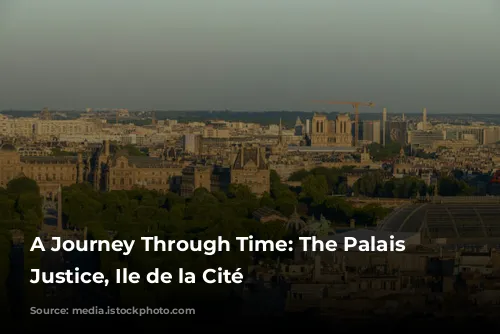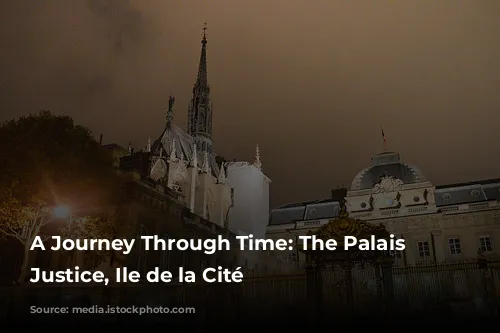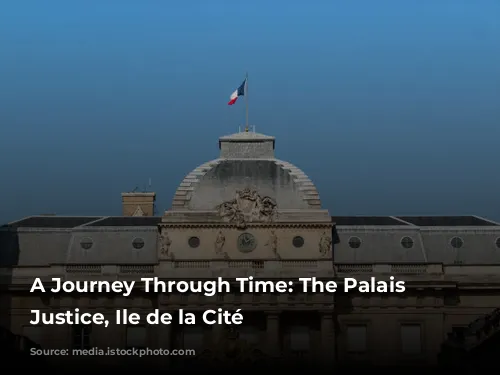Embark on a captivating journey through time as we delve into the rich history of the Palais de Justice, a landmark that stands as a testament to Paris’s enduring legacy. Situated on the Ile de la Cité, the heart of the city, this iconic structure weaves together the stories of royalty, justice, and architecture, creating a captivating tapestry of the past.
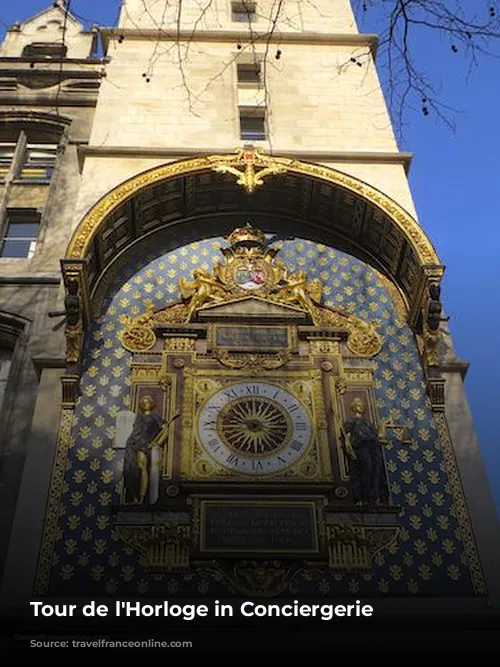
A Royal Legacy: From Palace to Courts
The Palais de Justice proudly occupies the grounds of a former royal residence, its very name echoing its regal beginnings. The Sainte-Chapelle, once the private chapel of King Louis IX, stands as a testament to the grandeur of the era. Across the way, overlooking the Seine, the imposing Conciergerie, a medieval prison, stands as a stark reminder of the complex nature of justice throughout history. These intertwined structures, each with its unique history, reflect the evolving landscape of governance and justice in Paris.
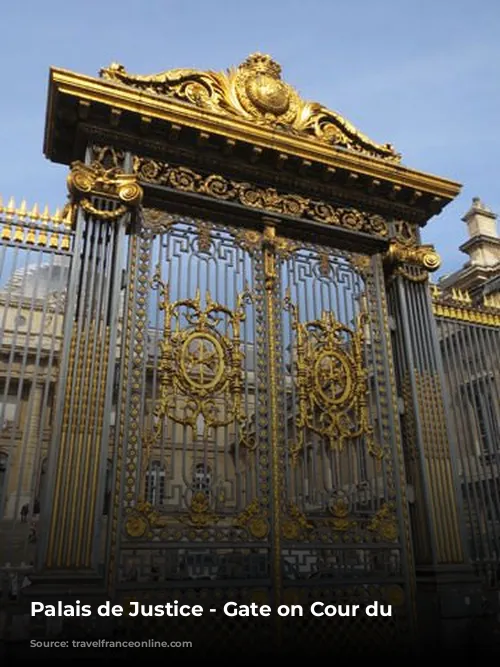
The Island’s Origins: From Celtic Times to Roman Rule
The Ile de la Cité, a small island nestled in the Seine River, holds the key to understanding Paris’s ancient origins. Long before the Roman conquest, the Gallic tribe Parisii established their oppidum, Lutetia, on this very spot. Hunting, fishing, and river trade fueled their prosperity, solidifying their influence in the region. Even after the Roman conquest in 52 BC, Lutetia continued to thrive, becoming a vital hub for Roman administration. The Romans erected their Governor’s Palace on the site of the current Palais de Justice, marking the island’s significance within the Roman Empire. The Temple of Jupiter, perched atop what would later become Notre-Dame Cathedral, stood as a testament to their faith.
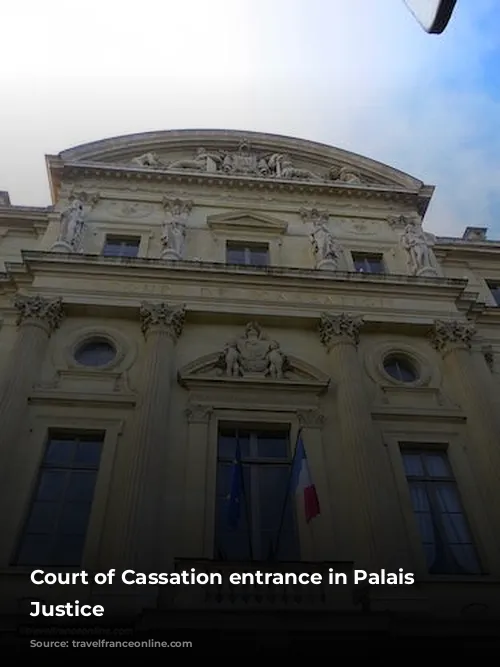
Flourishing in the Middle Ages: A Center of Power and Commerce
Within the ancient walls of the Cité, life bustled with activity. Forums, jails, markets, shops, and residences filled the space, reflecting the prosperity of the era. The Cité thrived until the decline of the Roman Empire in the late 5th century. With the Frankish king Clovis’s seizure of Gaul in 481 AD, a new chapter began, marking the island’s pivotal role in the birth of France.
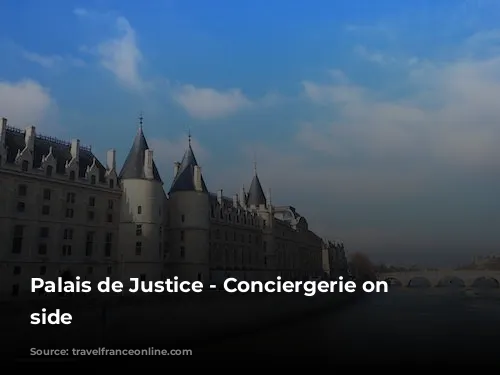
The Rise of the Palais de Justice: From Royal Palace to Legal Hub
The Ile de la Cité underwent its first significant transformation under the reign of Louis IX in the late 1240s. King Saint-Louis, eager to leave his mark, embarked on an ambitious project to redesign the palace. He entrusted the talented architect Pierre de Montreuil with the construction of the Sainte-Chapelle, completed in 1248, and the Tour Bonbec, a prison built in 1250.
Philip the Fair further transformed the palace at the dawn of the 14th century. Recognizing the need for a centralized location for the kingdom’s legal, administrative, and financial affairs, he converted the palace into justice courts. He preserved the Tour Bonbec, incorporating it into the complex, but demolished the outbuildings and flanking wall to make way for the impressive Conciergerie. This structure became the administrative heart of the kingdom, housing various chambers and towers, including the Salle des Gardes (Guardroom) and the Salle des Gens-d’Armes (Hall of the Men-at-Arms).
To improve connectivity, Philip-the-Fair constructed the Galerie Marchande (Marchande Gallery), linking the Salle Haute to the Sainte-Chapelle, facilitating easy access between these two iconic structures. His ambition extended beyond the palace walls, leading him to fill the river arm separating the Ilot Galilée from the southern side of the island, creating the Quai des Orfêvres in 1310. This area, known as the medieval jewelers’ district, became a vibrant hub of commerce and craftsmanship.
Philip-the-Fair inaugurated his newly transformed palace in 1313, marking a defining moment in the history of the Ile de la Cité and the evolution of the French monarchy.

Further Transformations and Tragedy
King Jean le Bon continued to enhance the palace in 1353, constructing the Cuisines Saint-Louis and the Tour de l’Horloge (Clock Tower). The kitchens provided sumptuous feasts for the royal court, while the Clock Tower served as a symbol of royal authority. The gardens surrounding the palace underwent a remarkable transformation under the guidance of Queen Marie de Medici in the 16th century. She created a haven of natural beauty, introducing a diverse array of flora and landscaping features.
In 1367, Charles V made a pivotal decision, abandoning the Ile de la Cité for the Louvre and moving the Parliament to the old royal palace. This marked a shift in the island’s role as the center of political and judicial power. The Salle Haute of the palace was repurposed into the Salle des Pas-Perdus (Hall of the Lost Steps), serving as a waiting room for the Law Courts. This expansive hall led to the Supreme Court of Parliament, known today as the First Civil Court. This very hall, unfortunately, witnessed some of the darkest moments of the French Revolution.
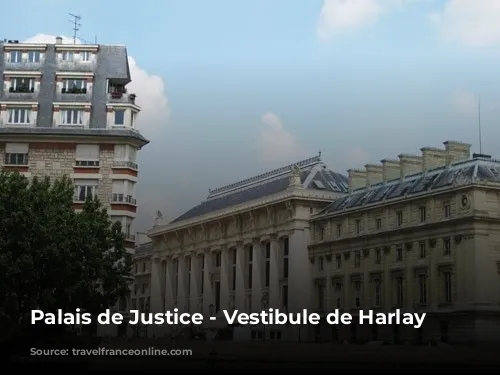
The Ile de la Cité Continues to Evolve
The Ile de la Cité expanded in 1607 with the amalgamation of two neighboring islets, creating the Place Dauphine. Elegant stone and brick houses were erected around this newly formed square. However, in 1874, much of this historic architecture was sacrificed to make way for the construction of the Vestibule de Harlay, a grand entrance to the Law Courts. The island’s transformation continued with the creation of the Quai de l’Horloge along its northern side in 1611, providing a picturesque promenade along the Seine.
A devastating fire ravaged the eastern facade of the Palais de Justice in 1776. The reconstruction efforts in 1836 resulted in a unique blend of architectural styles, combining elements of Gothic and Corinthian design.
Baron Haussmann’s sweeping renovations of Paris in the 1850s had a profound impact on the layout of the Ile de la Cité, including the Palais de Justice. His ambitious urban renewal projects involved the demolition of medieval buildings and gardens to make way for additional law courts. The Chapelle Saint-Michel, which once stood in the courtyard of the Sainte-Chapelle, was demolished to accommodate these developments. Haussmann also oversaw the construction of a new jail along the Quai des Orfêvres, which served its purpose until its decommissioning in 1914.
The turbulent events of the Paris Commune of 1871 brought further challenges to the Palais de Justice, as the First Civil Court burned. Fortunately, the hall was immediately restored, including its magnificent 15th-century ceiling.
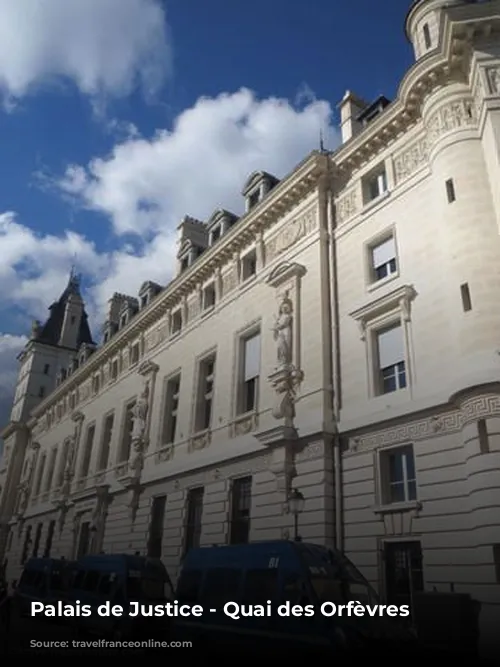
A Legacy of History, Law, and Beauty
The Palais de Justice, with its intricate history, remains a fascinating symbol of Paris’s past, present, and future. It stands as a testament to the evolution of justice, governance, and urban development within the city.
The Ile de la Cité, the birthplace of Paris, continues to be a vibrant hub of activity, preserving its rich history while embracing the challenges of the future. From its Celtic origins to its role as a royal center to its current function as the seat of justice, the island’s story is a compelling journey through time. So, next time you find yourself in Paris, take a moment to explore the Palais de Justice and the Ile de la Cité, allowing yourself to be swept away by the magic of history and the enduring beauty of the city.

